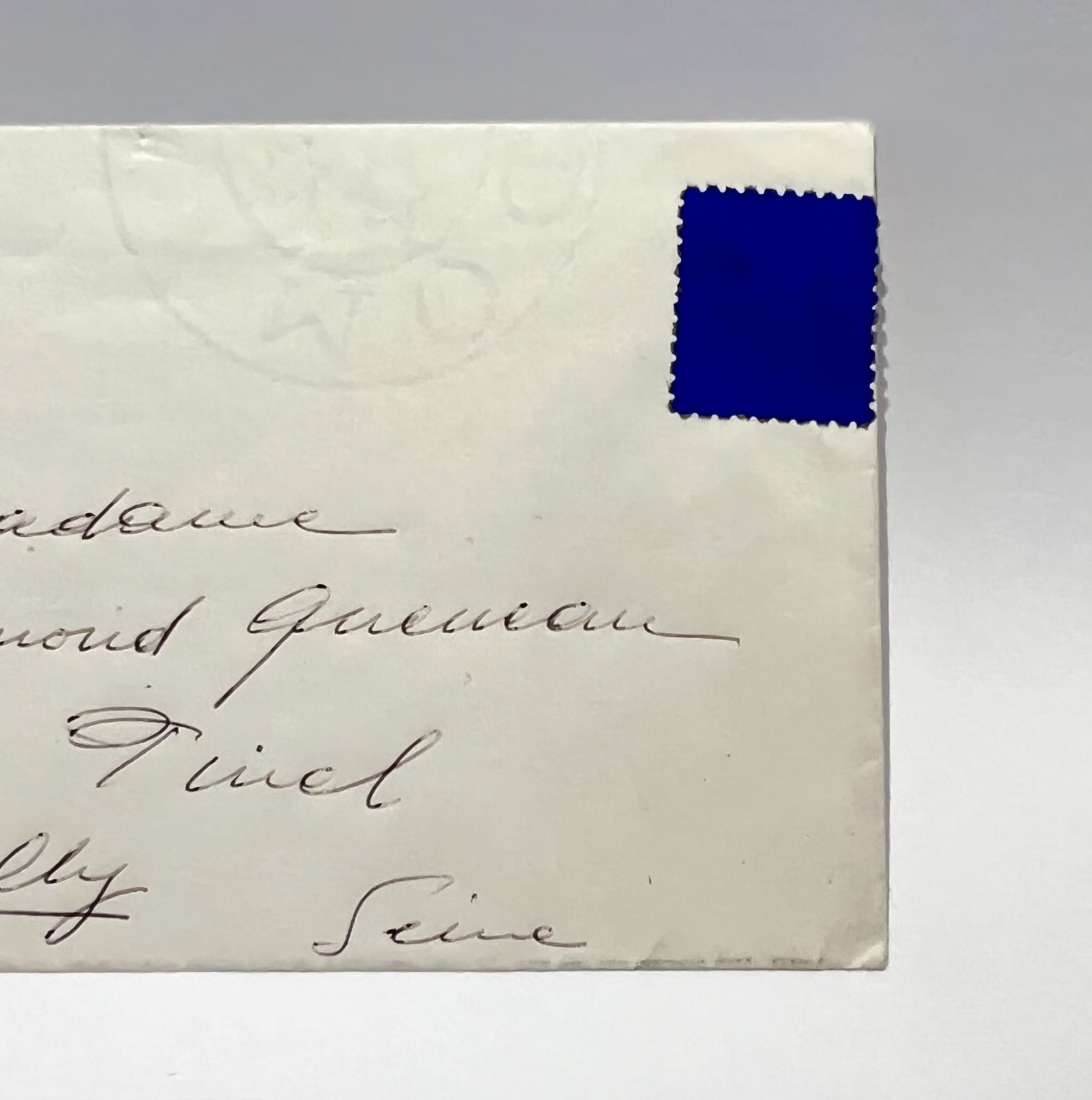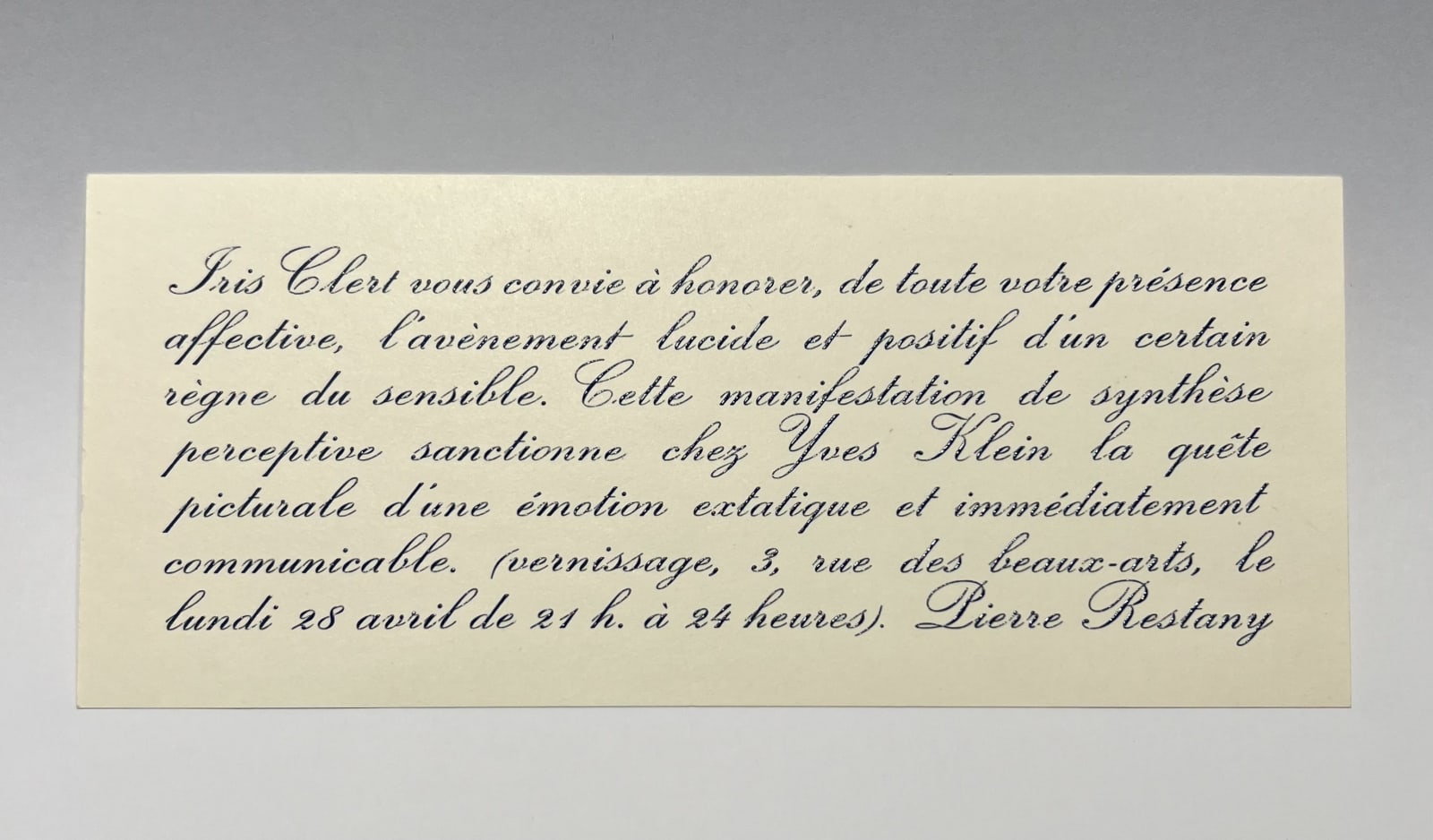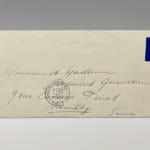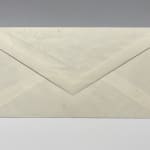Yves Klein
Further images
Very rare original Yves Klein postage stamp covered in IKB (International Klein Blue) pigment on a paper envelope, inscribed by hand in ink.
The envelope, postmarked 22.4.1958, is addressed to the surrealist poet and novelist Monsieur Raymond Queneau in Neuilly sur Seine.
Accompanied by an invitation to Klein's show 'Le Vide' ('The Void') which opened on April 28th 1958 - his first landmark exhibition at the Iris Clert Gallery in Paris.
The show took place in a space of less than 20 square metres, the gallery completely emptied of objects apart from a display case, with the gallery walls painted white by Klein during a 48 hour period of isolation.
Printed in blue raised ink (with accompanying business card-sized invitation for two persons), the invitation reads:
“Iris Clert invites you to honor, with all your affective presence, the lucid and positive event of a certain reign of the sensible. This demonstration of perceptive synthesis sanctions the pictorial quest of Yves Klein for an ecstatic and immediately communicable emotion. (Opening, 3, rue des Beaux-Arts, Monday, April 28, 9 p.m.–12:00). Pierre Restany”.
On the opening night, on his 30th birthday, the artist set up a sophisticated entrance ceremony: blue drapery was hung in the lobby of the building (the only entrance to the gallery left after the main gallery’s door was shut), the gallery’s window was painted blue, and two Republican Guards surveilled the access and two further bodyguards were meant to guard the Guards. A blue drink (a combination of gin, Cointreau, and methylene blue) was served to the 3500 attendees, who apparently ended up urinating blue the next day (much to the artist’s delight).
The show was a huge critical success, hailed by the likes of writer Albert Camus (“With the void, full empowerment.”) and art critic Jean Grenier, who wrote that “The Void” represented “the numerous magic and incalculable powers given in a single color.”
Between 1958 and 1969 Iris Clert held three more exhibitions of Yves Klein, but the relationship between the artist and the gallerist was severed abruptly after a dispute over intellectual rights.
Accepted by the French postal system, even though not using a legal stamp, the envelope with IKB stamp became an artwork in it's own right.










